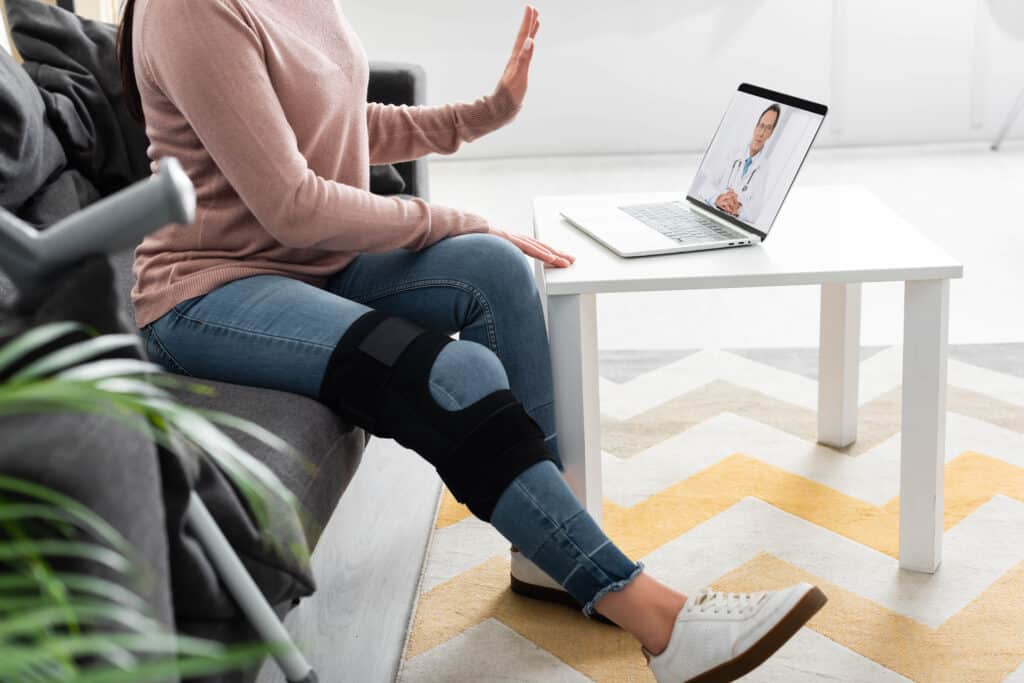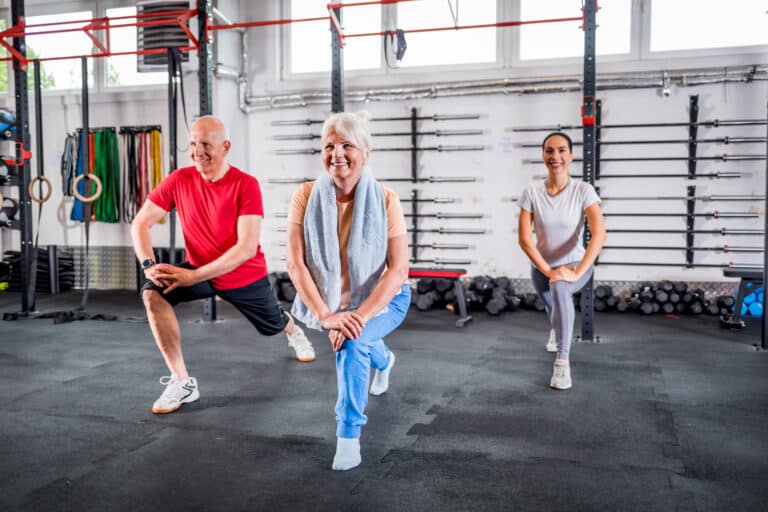Choosing the right knee brace can be crucial if you’re experiencing knee pain, planning to engage in sports, or recovering from surgery.
This article will guide you through the three primary types of knee braces: prophylactic, best for high-impact activities; functional, tailored for specific knee issues like arthritis; and rehabilitative, ideal for post-surgical recovery and ensuring restricted movement to aid healing.
We’ll also outline how to choose the right brace and consider material, adjustability, and patella design. Understanding these options can help you make an informed decision, whether you’re looking to prevent injuries, manage an existing condition, or support your knee post-surgery.
Knee braces offer significant benefits including pain relief and added support, but they are not a cure-all and should be used wisely to avoid dependency and discomfort. To help you make the best choices for your health and quality of life, we’ll also outline when to seek more help.
Overview of Types
Over time, our knees can feel the impact of wear and tear from an active lifestyle. The knees bear the brunt of the ground reaction forces encountered from walking, stair climbing, exercising, and even sitting.
Though maintaining healthy knee joints requires maintaining lower extremity strength and flexibility, a knee brace is a supplemental tool that can offer much-needed additional support and relief.
There are three main types: prophylactic, functional, and rehabilitative.
Prophylactic Knee Braces
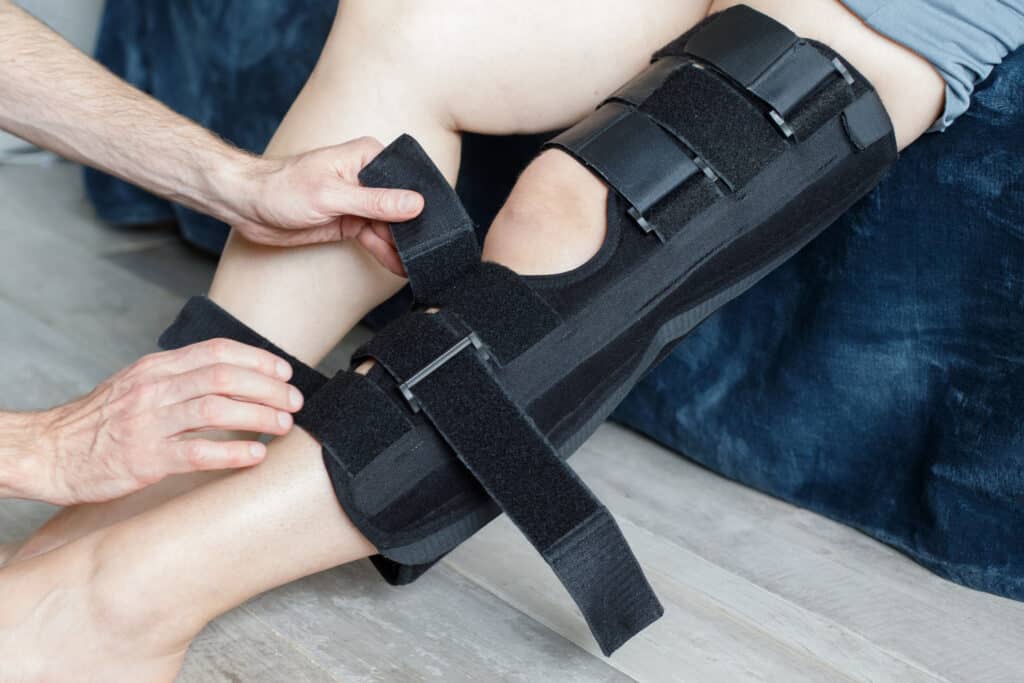
Prophylactic knee braces protect the knee from injuries during high-impact sports or activities. Athletes or active individuals typically use them to prevent future knee damage or re-injury.
Prophylactic braces are designed to fit firmly around the knee, offering high support and stability. However, they can be bulkier and more restrictive than other types, so they might not be the best choice for everyday use.1
Functional Knee Braces
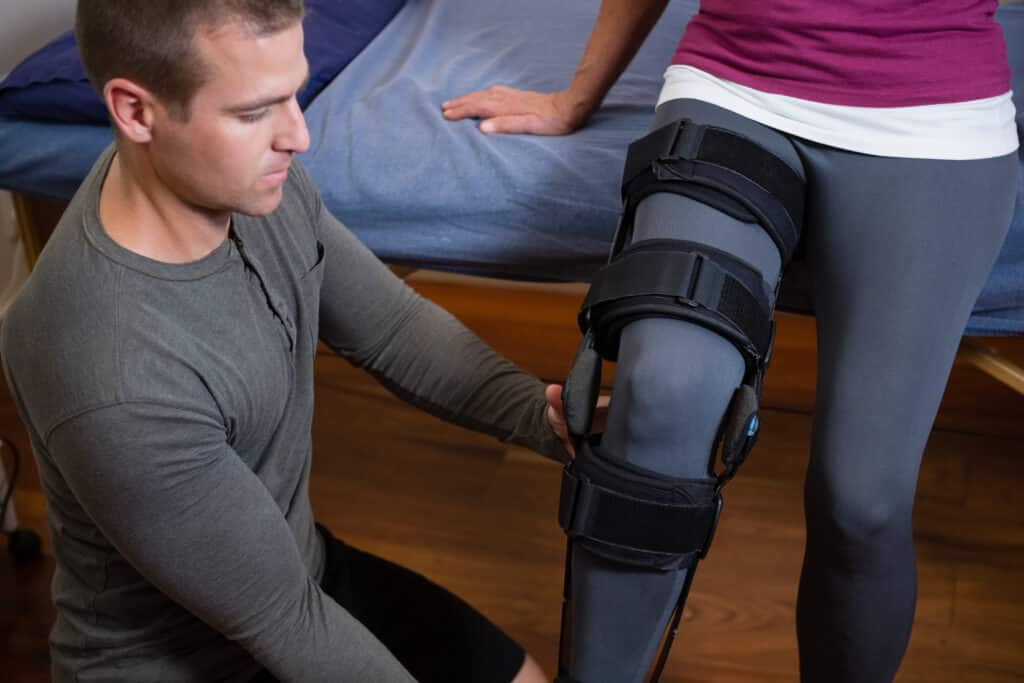
If you’ve ever twisted your knee or suffered from a knee condition like arthritis, you might have used a functional knee brace. These braces are intended to assist knees that have been injured or have undergone surgery. They aim to reduce pain and improve mobility.
Knee braces typically used to target arthritis focus on compression and stabilization. Cho-Pat braces are designed to support conditions like runner’s knee and patellar tendonitis. They compress the patellar tendon, helping to reduce strain and alleviate pain.
A significant advantage of functional braces is that they can be customized to fit your needs. However, due to their tailored design, they tend to be more expensive.
Rehabilitative Knee Braces
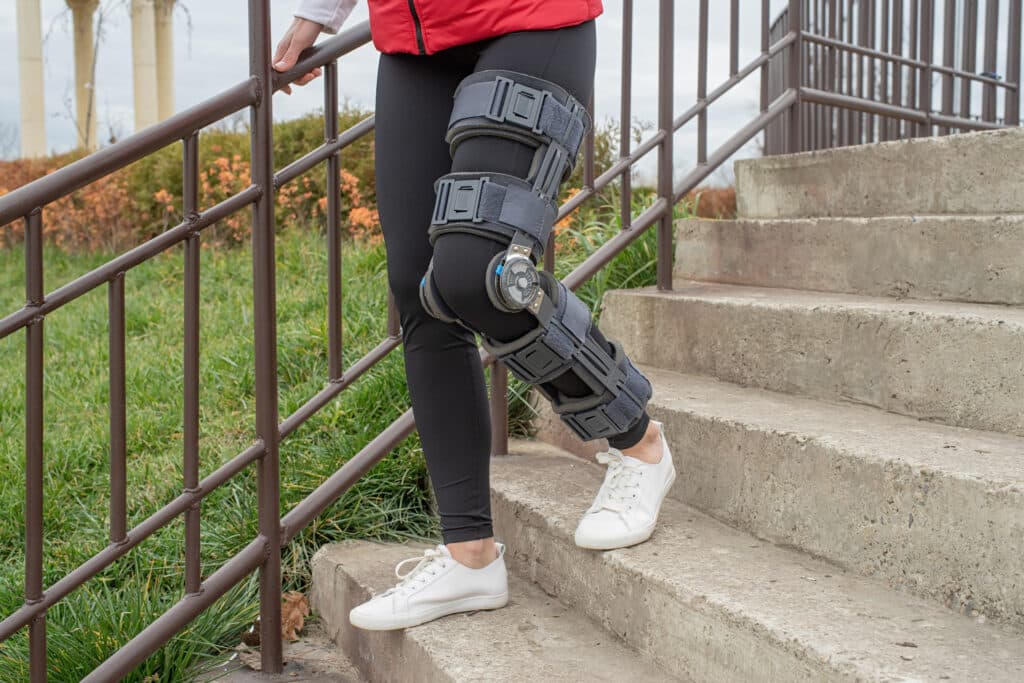
Rehabilitative knee braces are typically used in the weeks following knee surgery or a severe injury. Their primary goal is to limit the knee’s movement to prevent further injury while allowing the knee to heal and regain strength.
This category can include hinged knee braces, often used after ligament tears and repair/reconstruction surgeries. It can also include stabilization braces, which focus on stabilizing the kneecap (patella) and are commonly used for conditions like severe patellar instability or dislocation.
These braces are usually larger and more rigid than others, providing the knee with optimal protection during recovery. The downside is that they can be cumbersome and limit mobility. However, remember, they are typically temporary and crucial for a successful recovery.
Each type of knee brace serves a specific purpose and has pros and cons. The right brace depends on your needs, lifestyle, and your healthcare provider’s recommendation.
By understanding these types, you can make a more informed decision and take a step towards pain relief and improved mobility.
Factors to Consider
When choosing the best knee brace for your specific needs, there are several key features to remember.
Material and Adjustability
The material of the brace is of utmost importance. You want it to be durable but also comfortable for long-term wear. Look for breathable, easy-to-clean, skin-friendly materials like neoprene or elastic.
Adjustability is another critical factor to consider. A good knee brace should fit snugly but comfortably without cutting off circulation. Therefore, adjustable straps can be a game-changer, allowing you to customize the fit to your unique knee size and shape.
This is especially important when you have a brace after surgery or an injury, as your knee may drastically change in size as swelling increases and decreases. It is essential to support and protect the knee without cutting off any blood or fluid circulation that aids healing.
Open or Closed Patella Design
An open patella knee brace has a hole where your kneecap is, easing pressure on the kneecap while allowing it to move freely.
This type of brace is especially helpful if you have kneecap pain or conditions that affect how your kneecap moves. It’s also a good choice for those who are active and need their kneecap to move naturally during activities like walking or sports.
On the other hand, a closed patella knee brace covers your entire knee, providing even support and pressure all around.
Our Favorite Compression Type Brace
The NEENCA Compression Knee Sleeve
If you have a nagging knee pain that you want to protect from getting worse, you may benefit from wearing a compression brace with lateral support. This type of brace can reduce inflammation, improve blood flow, and provide some stability for your knee. Just remember this is a “comfort fix”, not a long-term solution. You’ll still want to follow up with your physical therapist for exercises and other therapies that can help you manage your pain and prevent further damage to your knee from osteoarthritis.
The highly rated Neenca Compression Knee Sleeve is the brace we most often recommend to our patients.
Our recommendations are the same items we trust and prescribe to patients. When you buy through links like this on our site, we may earn an affiliate commission to support new content.
This kind of brace is better if you need overall knee support to manage swelling, pain, or to keep your knee warm, which can be beneficial in conditions like arthritis or after knee surgery.
When deciding between an open or closed patella knee brace, think about what your knee needs most. If you need to keep your kneecap free to move, the open patella brace might be better. If your entire knee needs support and warmth, then the closed patella brace could be the way to go.
Choosing a Knee Brace Based on Your Condition
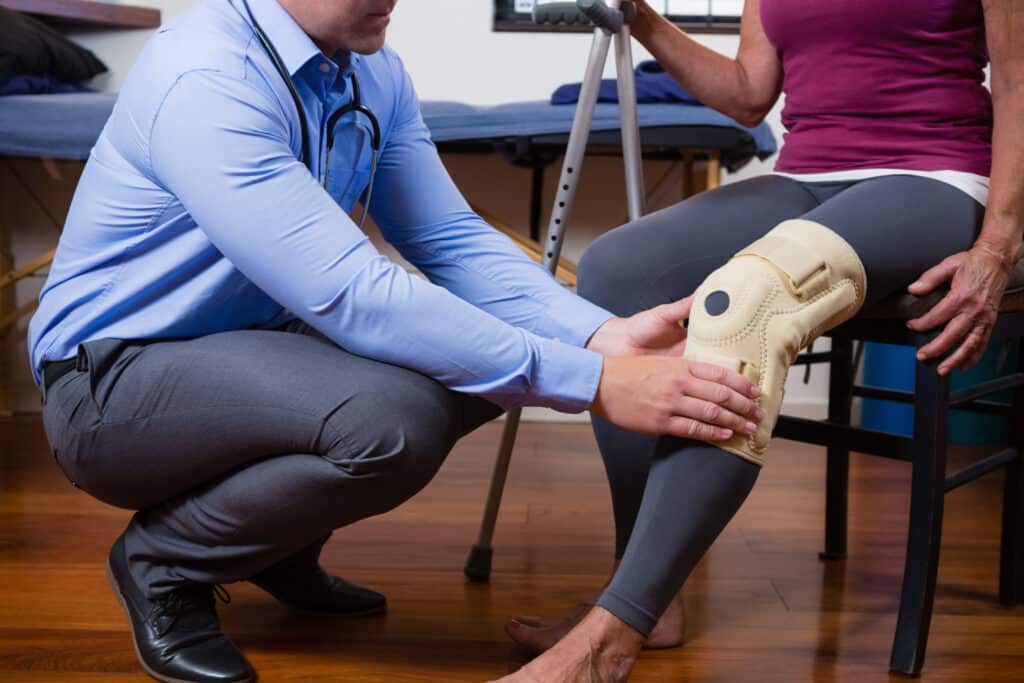
Earlier, we discussed the three broad categories of knee braces. The type of knee brace you’ll need within the right category can depend on your specific condition.
Let’s review a few common injuries or conditions that may benefit from using a knee brace and which is most appropriate for each situation.
Knee Braces for ACL Injuries
Dealing with ACL injuries can be daunting. Bracing is key to recovering from these ligament tears and can help you safely and comfortably return to normal activity.
Suppose you have an acute anterior cruciate ligament injury or are recovering from an ACL repair/reconstruction surgery. In that case, a hinged knee brace might be your best bet. Hinged braces provide maximum support and stability, preventing twisting and varus or valgus forces on the knee joint, which is crucial for recovering from an ACL injury.
If you have torn your ACL before, using a functional knee brace specifically designed for ACL injuries is one effective way to manage it. These braces offer excellent support, limit the range of motion during activity and sports, and prevent further injury. They also help reduce pain and inflammation, making daily activities more manageable.2
Knee Braces for Arthritis
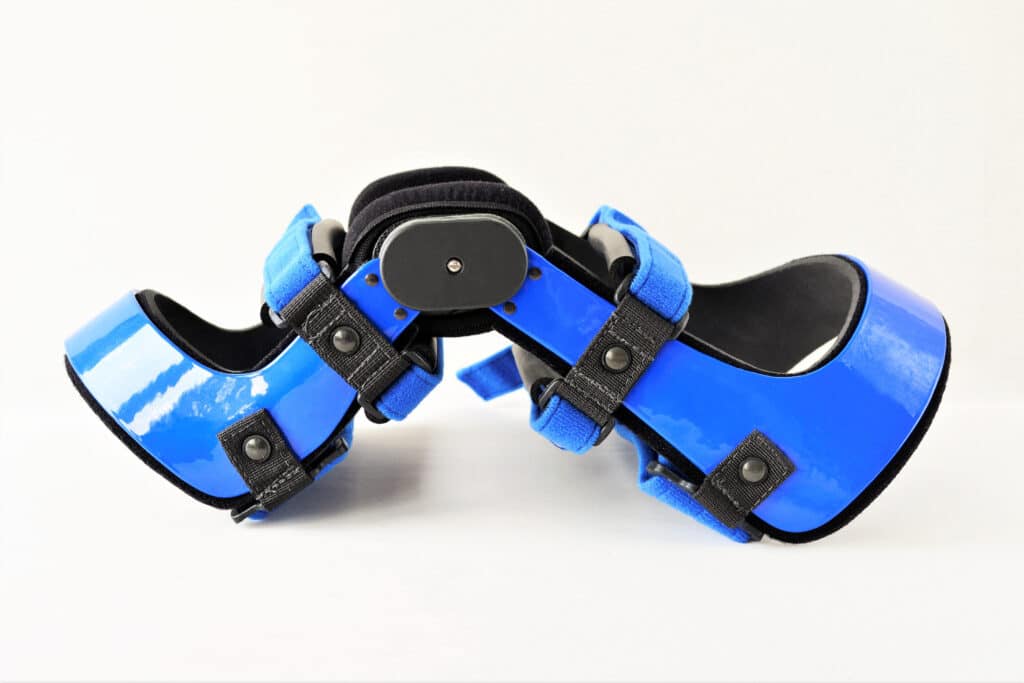
Arthritis, a common condition among older adults, can significantly affect one’s quality of life.
Fortunately, unloader knee braces have shown significant benefits for arthritis patients. These braces, as the name suggests, “unload” or shift the weight from the affected knee area to a healthier part, thus reducing pain.3
Moreover, lightweight unloader braces offer adjustable settings to provide a comfortable fit. They are designed to enhance mobility and reduce the need for medication or surgery.
Depending on the severity of your arthritis, a sleeve-style knee brace can also provide the right balance of support and flexibility. These braces are meant to reduce discomfort and stiffness and often come with added features like heat or cold therapy to help manage symptoms of pain and inflammation.
Braces for Patellar Instability
Patellar instability can turn even the simplest tasks into a painful challenge. A patella stabilizing brace can be a game-changer here. This type of brace is designed with a specific cut-out or strap system to keep the kneecap (patella) in its proper position, improving stability and decreasing pain.4
It applies pressure to the knee joint, which helps control the patella’s movement. This ensures that the patella stays within its groove during movement and prevents it from shifting out of alignment or dislocating. These braces are typically comfortable and easily adjustable to fit your knee size.
In all cases, remember this is not a one-size-fits-all situation. Your comfort, lifestyle, and specific condition should all be considered when choosing the right knee brace. It’s always best to seek advice from your healthcare provider to make the most informed decision.
The Pros and Cons of Knee Bracing
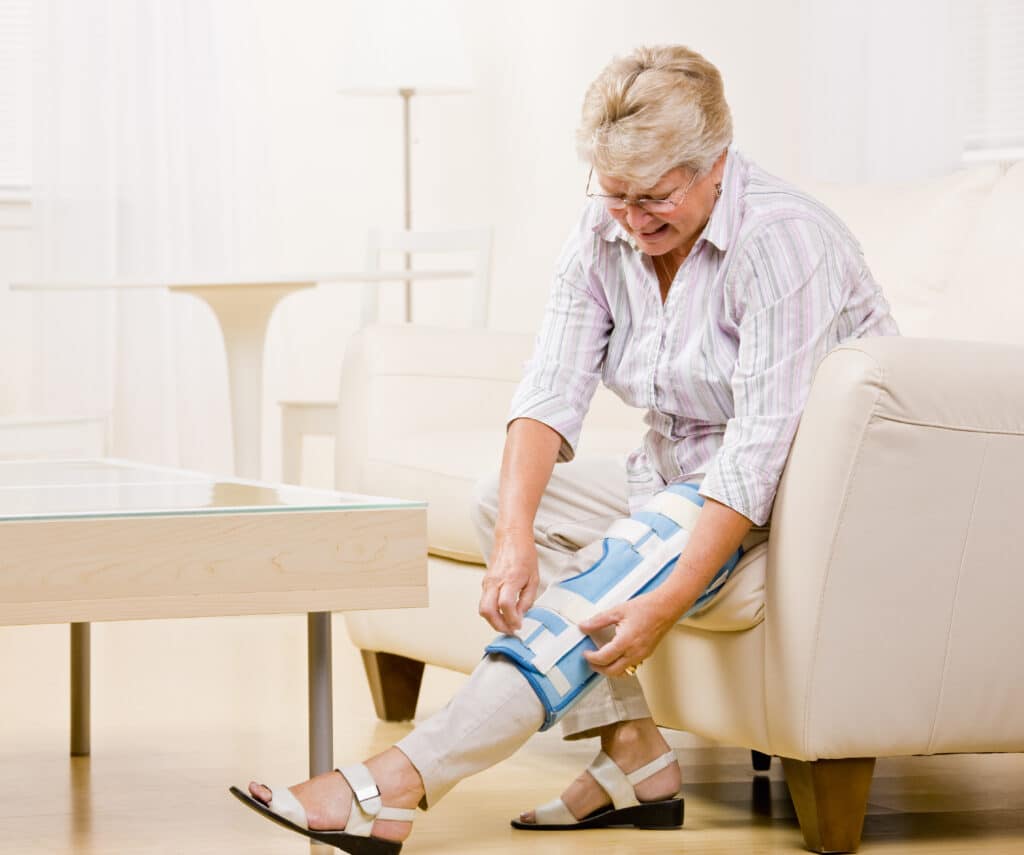
Knee braces are often recommended for those experiencing knee pain or instability, which can be especially common among older adults. But, like most medical interventions, they have pros and cons.
Improved Knee Stability
On the plus side, knee braces can provide integral support and stability. This is especially beneficial for those with arthritis or other degenerative knee conditions, which can weaken the joint and even the muscles surrounding the joint.5
Pain Relief
Knee braces can also offer pain relief, often allowing users to reduce reliance on pain medications. As a medical professional, I’ve seen firsthand how much of a difference this can make.
A brace can reduce pain and stability, encouraging more activity, a less sedentary lifestyle, and increased independence and balance during upright mobility.
Better Alignment
Knee braces also encourage proper knee joint alignment and tracking of the knee cap during all movements.
This can help prevent further wear and tear and, in some cases, even slow the progression of conditions like osteoarthritis.3
Potential Downsides of Bracing
Despite the improvements in movement and life quality, there are a couple of downsides to be aware of:
Discomfort
Knee braces can sometimes be uncomfortable to wear. They may cause skin irritation or discomfort, particularly if not fitted correctly. Working with a healthcare professional ensures the brace suits your needs and body shape.
If you are wearing a brace, it’s also important to give your skin a break between wears by taking the brace off and checking your skin for any redness, irritation, or breakdown.
To prevent complications, ensure that the brace remains clean and that the skin surrounding the knee joint is dry and uncompromised when it is applied.
Reliance on Your Brace Over Time
Another potential downside is that some people may become overly reliant on their brace, leading to muscle atrophy over time. The key is to use the brace as a tool, not a crutch, and to continue with strengthening exercises as recommended by your physical therapist or doctor.3
The muscles surrounding your knee joint can do a spectacular job of supporting, offloading and protecting it, so it’s essential to remember that the brace is there as an additive rather than providing the primary support for the knee.
The Importance of Maintaining Realistic Expectations
Knee braces are not a cure-all. They can offer relief and support but cannot reverse the damage caused by osteoarthritis.
Secondly, knee braces can help reduce pain, but don’t eliminate it entirely. Again, it’s about management, not magic bullets.
Lastly, knee braces work best as part of an overall treatment plan. This includes regular physical therapy, a healthy diet, and other lifestyle changes. I’ve seen patients experience the best results when they embrace a holistic approach to their knee health.
When to Consult a Professional
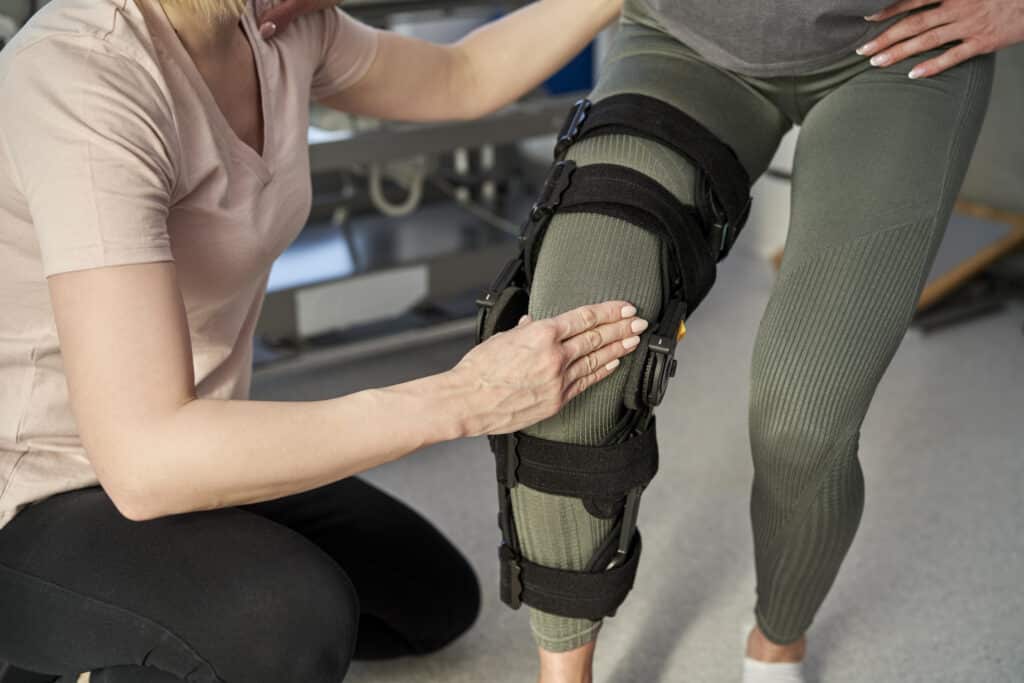
Knowing when to seek professional advice can significantly impact your health management with knee braces or any other medical intervention.
It can be challenging to decide when to consult an expert professional, especially if you’re dealing with persistent pain or a progressive condition.
Here are some crucial signs and situations that indicate it’s time to consult a physical therapist (PT) or a medical doctor (MD) for your knee pain.
When to See a Physical Therapist
In my experience, I’ve seen countless patients who have waited far too long to seek help. The result can often be a more prolonged recovery period or, in some cases, irreversible damage. Prevention is always better than cure, and timely consultation with a professional is crucial.
Physical therapists are experts in mobility and function. They can help you manage pain, improve movement, and maintain independence after an injury.
Perhaps you’re experiencing pain that doesn’t improve after a few days of rest and home remedies. In that case, it’s a solid indication to see a PT.
This could be knee joint or muscle pain or a problem with your walking pattern, causing unnecessary pain. Chronic knee pain, defined as pain that persists for over three months, should always be evaluated by a professional.
A PT can assess your risk of instability or falls and provide exercises to improve your balance and strength. After surgery, they can guide you through rehabilitation to help you regain function and strength more quickly and safely.
Through all of these scenarios, if bracing your knee is of interest to you or recommended by your physical therapist, you can discuss it during any of your appointments.
Your PT may have some great insight after evaluating you for which knee brace may fit your needs based on their objective assessment.
When to See a Medical Doctor
If you’re experiencing knee pain or considering the use of knee bracing, it’s crucial to consult a medical doctor (MD) under certain circumstances.
Seek medical attention if you encounter severe pain, persistent discomfort, or significant swelling in your knee, as these could indicate a serious injury or underlying condition. Inability to bear weight on the affected knee, signs of infection (such as redness or warmth), and sensations like popping or locking should prompt a visit to a healthcare professional.
If you have a history of knee injuries, especially those requiring surgery, or if your pain becomes chronic, it’s advisable to consult a doctor for ongoing care and guidance.
Additionally, if you are uncertain about the type of knee brace to use or whether bracing suits your condition, seek the expertise of a healthcare professional, such as an orthopedic specialist, who can provide personalized guidance based on your specific situation.
Remember that this advice is general, and individual circumstances may vary, so consulting with a medical professional is essential for a proper diagnosis and personalized treatment plan.
Key Takeaways
- There are three main types of knee braces: prophylactic for sports, functional for support after injury, and rehabilitative for post-surgery recovery.
- Prophylactic braces offer solid support but can be bulky for daily wear.
- Functional braces are great for specific knee issues like arthritis; they’re tailored to fit but tend to be pricier.
- Rehabilitative braces may restrict movement to aid healing, which is ideal after surgery but can limit mobility.
- Choosing the right brace involves considering the material, its adjustability, and whether it has an open or closed patella design.
- Knee braces can help with support and pain relief, but they aren’t a fix-all and can sometimes lead to reliance or discomfort.
- Talking to a professional about which knee brace best suits your lifestyle and specific needs is generally a wise decision.
FAQs
What are the different types of knee braces?
There are three primary types of knee braces: prophylactic braces used mainly in sports to prevent injuries, functional braces designed to support knees that have suffered previous injuries or conditions, and rehabilitative braces used post-surgery to restrict movement and aid healing.
Can a knee brace help with arthritis?
Yes, functional knee braces are especially beneficial for arthritis. They help by supporting the knee, reducing pain, and improving mobility. There are also specialized unloader braces that shift weight from the affected area to reduce pain.
What should I consider when choosing a knee brace?
Important factors to consider include the material of the brace (look for breathable, skin-friendly materials like neoprene), adjustability (to accommodate changes in swelling and ensure a good fit), and whether the brace has an open or closed patella design.
How do I avoid becoming dependent on a knee brace?
To avoid dependency, use the knee brace as a supportive tool rather than a crutch. Continue with recommended physical therapy exercises to strengthen the muscles around the knee and ensure the brace is used only as necessary.
References
- Hacker, S. P., Schall, F., Niemeyer, F., Wolf, N., Ignatius, A., & Dürselen, L. (2018). Do Prophylactic Knee Braces Protect the Knee Against Impacts or Tibial Moments? An In Vitro Multisensory Study. Orthopedic journal of sports medicine, 6(11), 2325967118805399. https://doi.org/10.1177/2325967118805399
- Marois, B., Tan, X. W., Pauyo, T., Dodin, P., Ballaz, L., & Nault, M. L. (2021). Can a Knee Brace Prevent ACL Reinjury: A Systematic Review. International journal of environmental research and public health, 18(14), 7611. https://doi.org/10.3390/ijerph18147611
- Rannou, F., Poiraudeau, S., & Beaudreuil, J. (2010). Role of bracing in the management of knee osteoarthritis. Current Opinion in rheumatology, 22(2), 218–222. https://doi.org/10.1097/BOR.0b013e32833619c4
- Laidlaw, M. S., & Diduch, D. R. (2017). Current Concepts in the Management of Patellar Instability. Indian journal of orthopedics, 51(5), 493–504. https://doi.org/10.4103/ortho.IJOrtho_164_17
- Yang, X. G., Feng, J. T., He, X., Wang, F., & Hu, Y. C. (2019). The effect of knee bracing on the knee function and stability following anterior cruciate ligament reconstruction: A systematic review and meta-analysis of randomized controlled trials. Orthopaedics & traumatology, surgery & research : OTSR, 105(6), 1107–1114. https://doi.org/10.1016/j.otsr.2019.04.015

